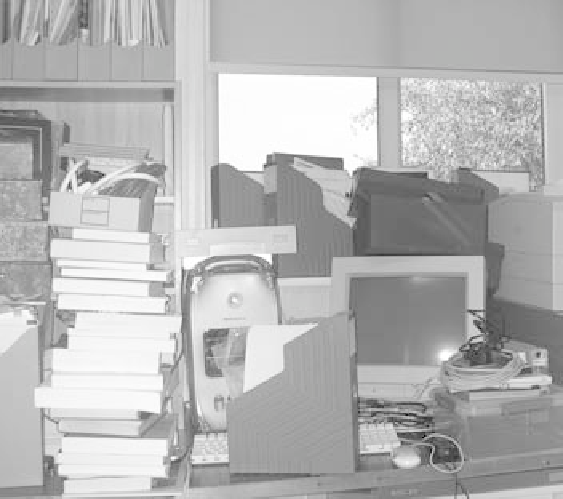Image Processing Reference
In-Depth Information
Figure 6-21
Combined low light and backlit images to show HDR possibilities.
be modified in a spatial manner so that areas of bright light are underexposed while dark
interior walls are overexposed. This balances the two and you can see detail in both at the
same time. It preserves the intent of what the photographer was trying to capture and is
way beyond what cameras are normally capable of. This is why so much lighting is
required to shoot movies on film sets.
It is possible to simulate the idealized HDR response with still photographs using
existing low-dynamic range equipment, but it is necessary to take two or more pictures
and combine them using sophisticated image-processing software. You can cheat with
Photoshop like I did, which was fine for a monochrome-printed image but not good
enough to realize the true benefits of HDR on movies. The goal is to build HDR into a cam-
era that shoots high-definition TV pictures and still get all those nice details in the dark-
ened corners of the room.
The color values in HDR describe the lightness over a range of values that is 4 orders
of magnitude in scope. This includes the entire visible gamut for the human eye. Systems
currently under development will at last allow us to realize the full range of human visi-
ble imagery within the production system for our video content. The consequence is that
there will be an unprecedented level of image quality available to us and we must make
sure that we don't throw away those benefits by using substandard compression on con-
tent that has been created using HDR techniques.


Search WWH ::

Custom Search